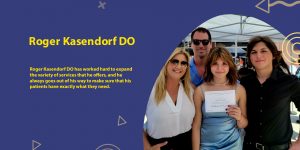The Art and Science of Osteopathic Manipulation


In the world of healthcare, there are numerous approaches to treating ailments and promoting overall wellness. While many people are familiar with conventional medicine and its various branches, such as allopathy, osteopathic medicine is a lesser-known but highly effective approach that deserves attention. At the heart of osteopathic medicine lies a unique and hands-on technique known as Osteopathic Manipulation (OMT). In this article, we will explore the art and science of Osteopathic Manipulation, its principles, techniques, and its role in promoting holistic healing.
I. The Foundations of Osteopathic Medicine:
Osteopathic medicine, often referred to as osteopathy, is a branch of medicine founded on the belief that the body is a unified system and its parts are interrelated. This holistic approach to healthcare was developed by Dr. Andrew Taylor Still in the late 19th century. Dr. Still believed that the body has an innate ability to heal itself when all of its components are in proper balance.
A. Principles of Osteopathic Medicine:
The Body’s Self-Healing Mechanism: Osteopathic medicine is based on the principle that the body has a natural ability to heal itself. Osteopathic physicians (DOs) view their role as facilitating and enhancing this inherent healing capacity.
Structure and Function Interdependence: DOs emphasize the interconnectedness of the body’s structure and function. They believe that an alteration in the structure can affect the function and vice versa. This forms the basis for Osteopathic Manipulation.
The Role of Prevention: Osteopathic medicine places a strong emphasis on preventative healthcare, promoting a healthy lifestyle to prevent illness and injury before it occurs.
II. The Art of Osteopathic Manipulation:
Osteopathic Manipulation, also known as Osteopathic Manipulative Treatment (OMT), is a core component of osteopathic medicine. It involves the use of hands-on techniques to diagnose, treat, and prevent a wide range of medical conditions. OMT is based on the principles of restoring the body’s structural balance to promote overall health and well-being.
A. Techniques Used in OMT:
Soft Tissue Techniques: Osteopathic physicians use their hands to manipulate and massage the body’s soft tissues, including muscles, ligaments, and tendons. This can help relieve muscle tension, improve circulation, and reduce pain.
Articular Techniques: OMT includes the manipulation of joints to improve their range of motion and alignment. These techniques can be particularly beneficial for individuals with musculoskeletal issues, such as back pain or joint stiffness.
Myofascial Release: Osteopathic Manipulation often involves myofascial release techniques, which focus on the body’s fascia, a connective tissue that surrounds muscles and organs. Myofascial release can help relieve tension and improve mobility.
Muscle Energy Techniques: These techniques involve the patient actively contracting specific muscles while the osteopathic physician applies a counterforce. This approach can help improve joint mobility and reduce muscle imbalances.
B. Conditions Treated with OMT:
Musculoskeletal Conditions: OMT is frequently used to treat musculoskeletal issues such as back pain, neck pain, and joint disorders. By improving structural alignment and function, OMT can alleviate pain and restore mobility.
Respiratory Conditions: OMT can be beneficial for individuals with respiratory conditions like asthma and chronic obstructive pulmonary disease (COPD). It can help improve lung function and reduce respiratory symptoms.
Digestive Disorders: Some digestive disorders, such as irritable bowel syndrome (IBS), can benefit from OMT. Techniques aimed at improving abdominal function and reducing tension in the gut may provide relief.
Headaches and Migraines: Osteopathic Manipulation can help alleviate tension in the neck and head, making it a valuable tool in the management of headaches and migraines.
III. The Science Behind Osteopathic Manipulation:
While OMT may seem like an art, it is firmly rooted in scientific principles. Research has shown that OMT can have measurable effects on the body, and its mechanisms of action are becoming better understood.
A. Effects on Pain Management:
Studies have demonstrated that OMT can modulate pain perception by activating the body’s natural pain-relieving mechanisms. OMT may increase the release of endorphins, which are the body’s natural painkillers, and reduce pain signals to the brain.
B. Impact on Circulation:
Osteopathic MManipulation has been shown to improve blood circulation and lymphatic drainage. By enhancing the flow of fluids in the body, OMT can promote tissue healing and reduce inflammation.
C. Influence on the Autonomic Nervous System:
OMT can have a calming effect on the autonomic nervous system, reducing stress and promoting relaxation. This can be particularly beneficial for individuals with conditions exacerbated by stress, such as hypertension.
IV. The Role of OMT in Holistic Healthcare:
Osteopathic manipulation is a valuable tool in the practice of holistic healthcare, which seeks to address the physical, emotional, and spiritual aspects of well-being. By restoring balance to the body’s structure and function, OMT can have far-reaching effects on a person’s overall health.
A. Complementary to Conventional Medicine:
Osteopathic manipulation is often used alongside conventional medical treatments. It can complement other therapies and medications, enhancing their effectiveness and reducing the need for higher doses of medications.
B. Patient-Centered Care:
One of the strengths of OMT is its patient-centered approach. Osteopathic physicians take the time to listen to their patients, understand their unique needs, and develop individualized treatment plans. This personalized care contributes to a higher level of patient satisfaction and engagement in the healing process.
C. Preventative Healthcare:
Osteopathic medicine places a strong emphasis on preventative healthcare. OMT can help identify and address potential issues before they develop into more severe conditions. This proactive approach aligns with the goals of holistic healthcare, which seeks to promote wellness and prevent illness.
Osteopathic manipulation is a robust and holistic approach to healthcare that deserves recognition for its effectiveness in promoting overall well-being. Rooted in the principles of osteopathic medicine, OMT offers a unique blend of art and science, addressing the body as a unified system and enhancing its natural ability to heal. Whether used to alleviate pain, improve mobility, or enhance the body’s self-healing mechanisms, Osteopathic Manipulation plays a vital role in the realm of holistic healthcare, offering a promising path to optimal health and wellness.
